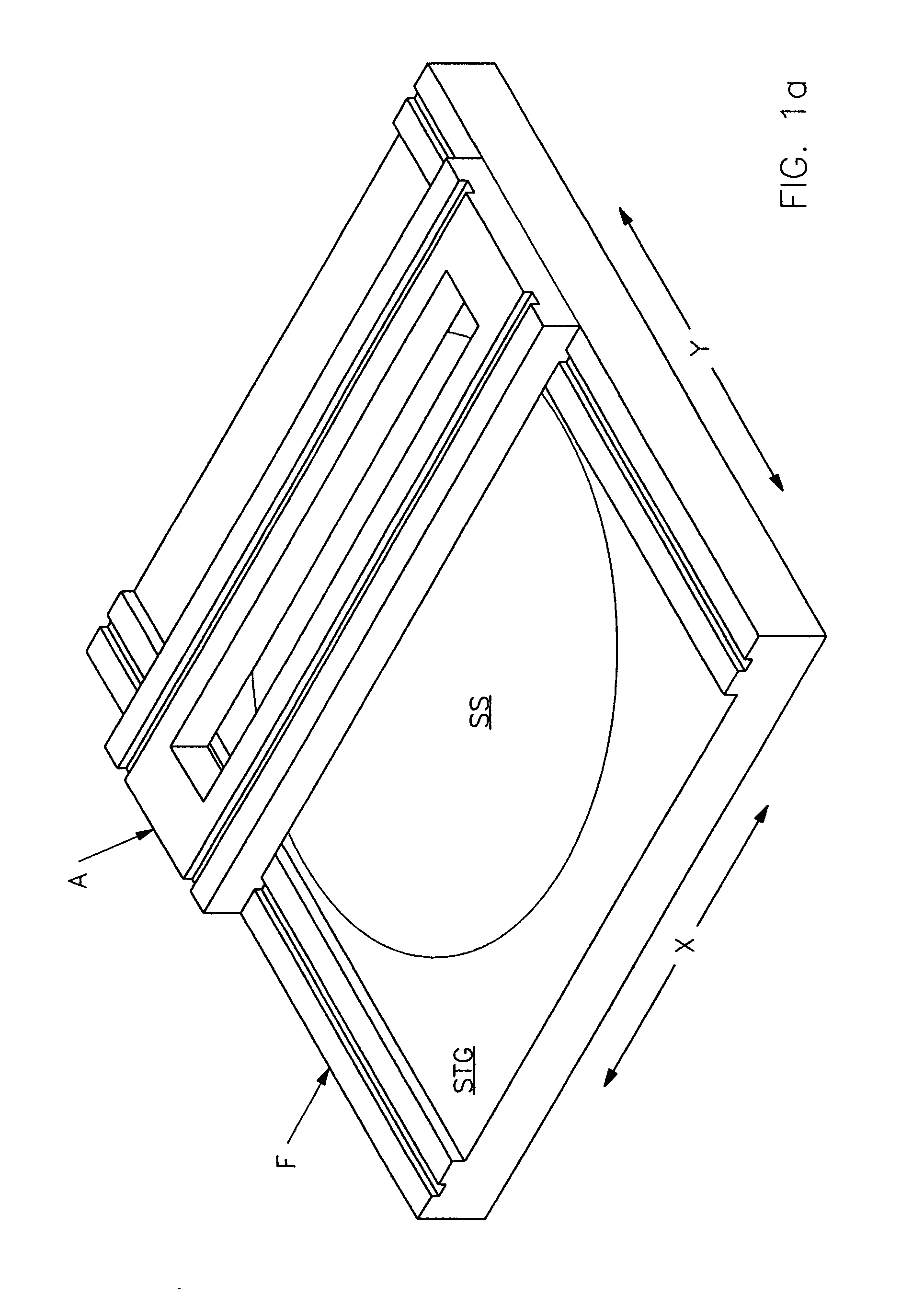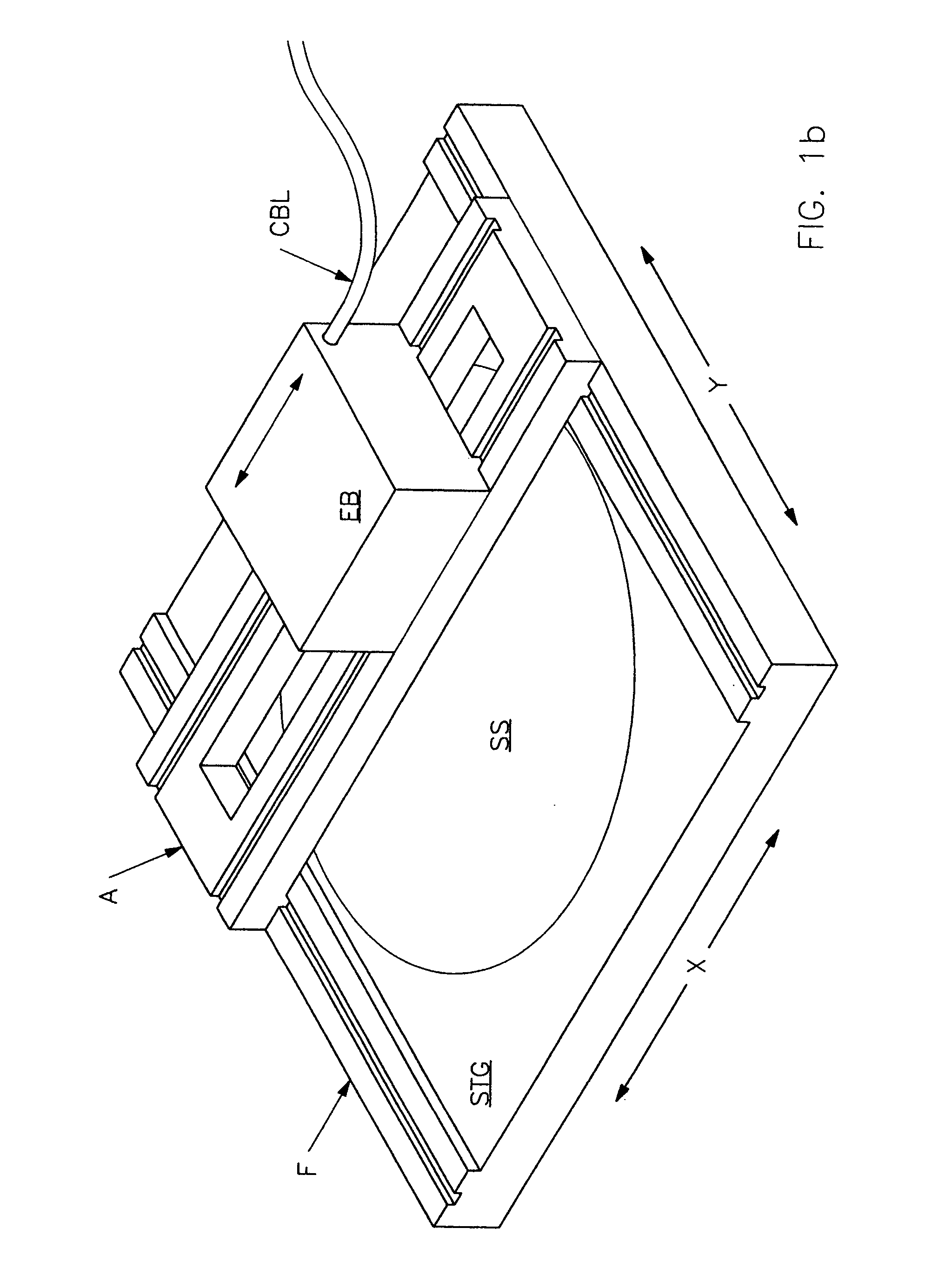Flying mobile on-board ellipsometer, polarimeter, reflectometer and the like systems
- Summary
- Abstract
- Description
- Claims
- Application Information
AI Technical Summary
Benefits of technology
Problems solved by technology
Method used
Image
Examples
Embodiment Construction
[0192]As disclosed in Parent application Ser. No. 11 / 105,852, FIGS. 1a and 1b demonstrate, in FIG. 1a, a perspective view of a Stage (STG) for supporting a large Sample (S), (eg. on the order of Feet / Meters in diameter), said Stage (STG) being being functionally combined with a Frame (F) which allows a Frame (A) to move atop thereof in a (Y) direction. Note that Frame (A) has an open middle region through which a Beam (E) of electromagnetic radiation, (for example see FIG. 2), can pass to reach the Sample (SS). FIG. 1b demonstrates addition of Black Box (EB) atop Frame (A), said Black Box (EB) being movable in an (X) direction atop Frame (A). (Note, while FIGS. 1a and 1b show that Sample facing upward, this does not limit application to a configuration wherein the shown system is rotated so that the sample faces laterally or is oriented in any other plane). While Also shown is an optional Cable (CBL) which can serve to provide electrical power into, and carry Data Detector Signals t...
PUM
 Login to View More
Login to View More Abstract
Description
Claims
Application Information
 Login to View More
Login to View More - R&D
- Intellectual Property
- Life Sciences
- Materials
- Tech Scout
- Unparalleled Data Quality
- Higher Quality Content
- 60% Fewer Hallucinations
Browse by: Latest US Patents, China's latest patents, Technical Efficacy Thesaurus, Application Domain, Technology Topic, Popular Technical Reports.
© 2025 PatSnap. All rights reserved.Legal|Privacy policy|Modern Slavery Act Transparency Statement|Sitemap|About US| Contact US: help@patsnap.com



